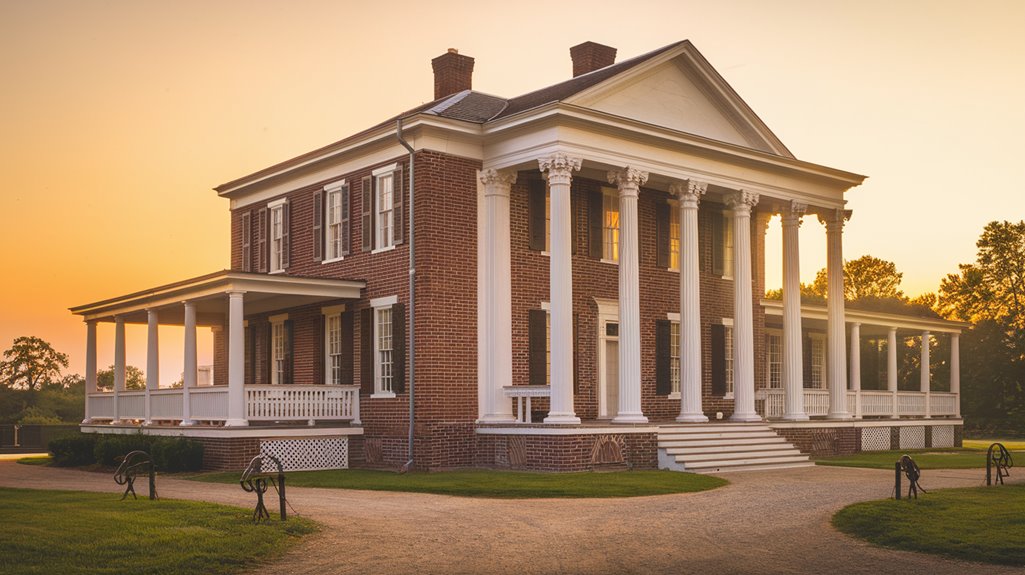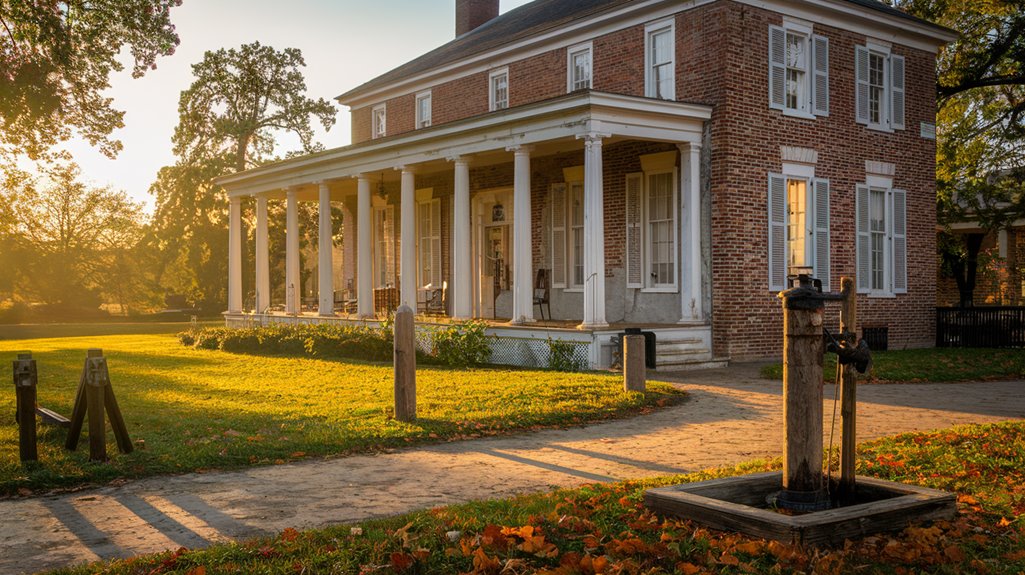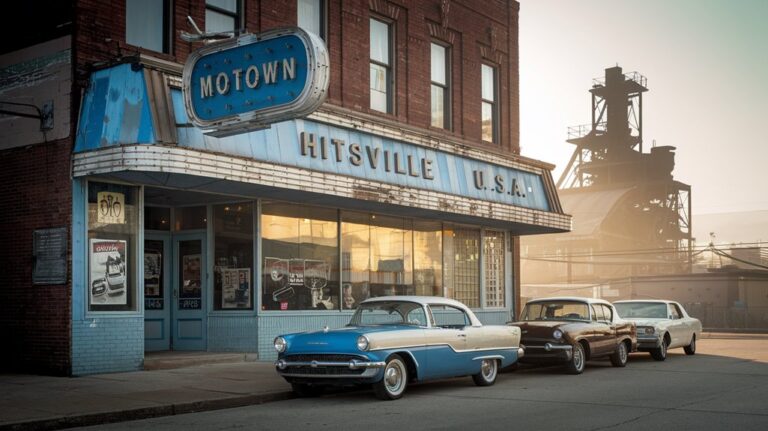The Same Property Saw the Start and End of the Civil War
You've probably heard many Civil War stories, but none quite match Wilmer McLean's extraordinary tale. As you consider the odds, imagine a single property bearing witness to both the war's explosive beginning and its somber conclusion. McLean didn't seek this distinction – fate simply dropped it in his lap, quite literally, with a cannonball through his chimney in 1861. Yet this was just the beginning of his unwitting role in American history.
A Cannonball Through the Chimney: Mclean's First Encounter With War
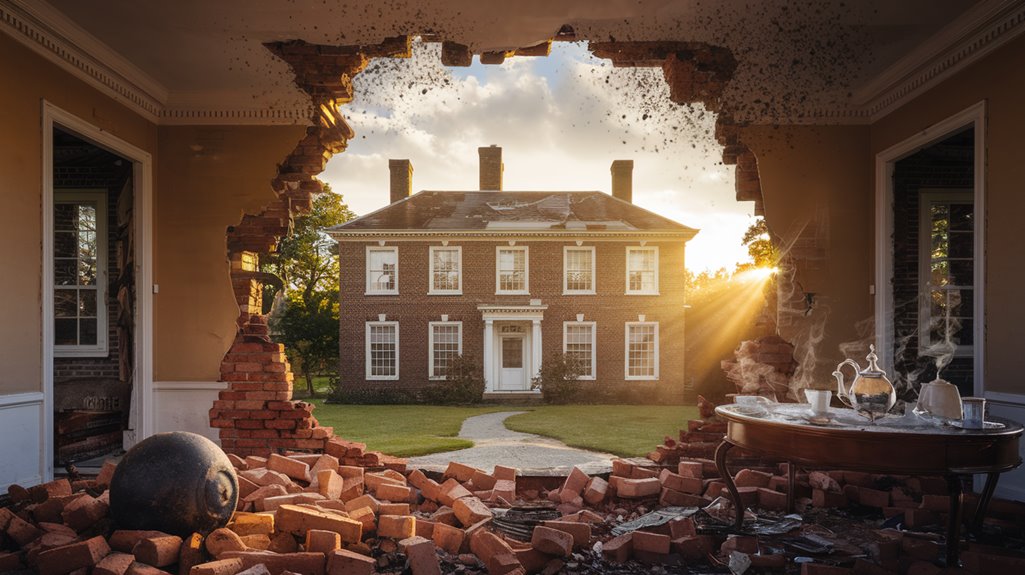
An unexpected blast rocked Fort Macon in 1942 when a Civil War cannonball, repurposed as a fireplace andiron, exploded during routine garrison duty.
You might find it ironic that the historical artifact, dormant for nearly 80 years, chose this moment to demonstrate its lingering destructive power. The explosion injured several soldiers, with Private Harry Chait suffering severe burns that required hospitalization. Like many academic critiques, this event sparked intense public debate about the preservation and handling of historical artifacts.
The cannonball explosion served as a stark reminder that even seemingly harmless historical artifacts can pose serious risks. The fort had been transformed into North Carolina's first park in 1936, before being recommissioned for military use.
While most black powder explosives become inert over time due to water exposure, this incident proved they're still dangerous when exposed to flame.
Local newspapers couldn't resist dubbing it "the last shot of the Civil War," though the incident would later prompt stricter protocols for handling historic munitions.
The Journey South: Finding Safety in Appomattox
Three desperate days marked General Robert E. Lee's desperate push westward along the Appomattox River.
Lee's strategy was clear: reach the South Side Railroad at Appomattox Station, where essential food supplies awaited his starving troops. But Union persistence proved relentless.
You'd have witnessed Union forces under Custer capturing three supply trains at Appomattox Station, dashing Lee's hopes for provisions. Original research from military archives continues to reveal new details about these pivotal moments.
The Confederate artillery, forced to fight as infantry skirmishers, couldn't hold back Custer's determined cavalry charge. Through rough, wooded terrain, Union troops seized 25 guns and pushed back the defenders. A white linen dish towel served as the flag of truce during surrender negotiations.
After losing 7,700 men at Sailor's Creek and facing continuous harassment, Lee's army found itself cornered.
With 63,285 Union troops against his mere 26,000, Lee realized the inevitable. The war's end was approaching at Appomattox Court House.
From Grocer to Witness of History: McLean's Unique Role
Wilmer McLean lived the most remarkable twist of Civil War fate. As a sugar broker conducting McLean's business with the Confederate army, he'd first encountered the war in 1861 when a cannonball crashed through his Manassas home's kitchen fireplace.
Confederate General Beauregard had commandeered the property as his headquarters during the First Battle of Bull Run. The general famously noted that the shell had destroyed their dinner. Like many historical archives that reveal unexpected details, the story reminds us how casual documents can illuminate the past.
Seeking safety, McLean relocated his family 120 miles south to Appomattox Court House in 1863.
Yet history wasn't finished with him. On April 9, 1865, Lee's aide Charles Marshall approached McLean about using his home for a meeting.
The historical significance of this moment can't be overstated – McLean's parlor became the site where Lee surrendered to Grant, effectively ending the Civil War in the very home of a man who'd tried to escape it.
The Parlor Where Peace Was Made
On April 9, 1865, McLean's parlor transformed into the stage for one of American history's most significant moments.
You'd find this historic room just off the center hallway to the left, where General Lee arrived at 1 p.m., followed by General Grant thirty minutes later.
Using extensive research and primary source materials, historians have documented every detail of this momentous meeting.
The room's historic significance became clear as the two commanders first engaged in pleasant conversation before addressing the vital matter at hand.
The meeting was conducted with remarkable dignity, as Grant's lenient surrender terms aimed to promote post-war healing and reconciliation.
Grant drafted the surrender terms while Lee, accompanied by Lt. Col. Marshall, waited.
The agreement was straightforward: Confederate soldiers would lay down their arms, sign paroles, and return home, with special provisions for officers.
Though Lee's signature that day effectively ended the war in Virginia, you'll note that fighting continued elsewhere, with other Confederate armies still active in the Deep South and beyond the Mississippi.
The Price of History: Souvenir Hunters and McLean's Legacy
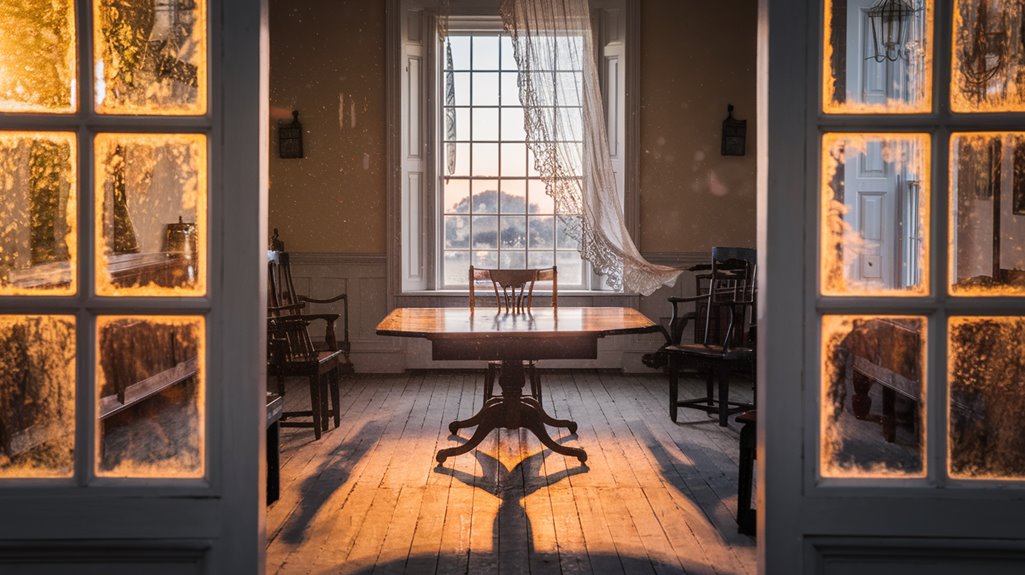
After the historic surrender, Union officers' enthusiasm for mementos led to an unexpected raid of McLean's home.
Grant's surrender meeting with Lee took place for exactly ninety minutes before reaching their agreement.
As souvenir hunters stripped the house of its furnishings, they paid McLean in Confederate currency that would soon become worthless. Much like a compelling narrative case study, McLean's story illuminates the personal cost of historical events. You might find it ironic that McLean, who'd profited from running sugar through Union blockades, would now face financial ruin.
The McLeans couldn't keep up with house payments and moved out in 1867.

